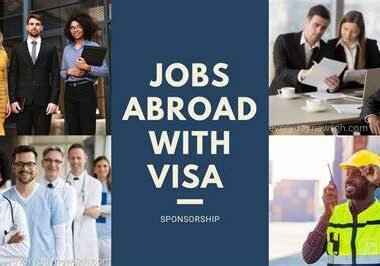
Immigrating to Canada can be achieved through several genuine pathways, each catering to different circumstances and qualifications.
Canada has several economic immigration programs at the Federal and Provincial levels designed to attract skilled workers and tradespeople from across the globe.
Aside from the economic programs, there are also pathways for foreigners to immigrate to Canada for studies or to reunite with family members.
The Express Entry system is a way for the Canadian government to manage applications for certain immigration programs, including the Federal Skilled Worker Program, Federal Skilled Trades Program, and the Canadian Experience Class.
If you think you’re a good fit, buckle up with the essential prerequisites: work experience, language proficiency (in English or French), and an adequate education level. Then comes the real game: creating an express entry profile and subsequently entering the candidate’s pool. Higher points on the Comprehensive Ranking System mean a swifter Invitation to Apply (ITA) from Canada; now doesn’t that sound like a contest you want to win?
Federal Skilled Worker (FSW) Program – for skilled workers who meet specific education, job experience, and language requirements.
Federal Skilled Trades (FST) Program – for skilled tradespersons with Canadian job offers or valid certificate qualifications.
Canadian Experience Class – for people with at least three years of Canadian work experience.
If you meet the eligibility criteria for any of these streams, you can create an online EE profile and upload your qualifications. The Comprehensive Ranking System (CRS) tool will assess your profile and assign you a score. The highest-scoring candidates in the EE pool will be selected via a draw every two weeks. IRCC fixes the qualifying score for each draw.
The selected candidates will each receive an Invitation to Apply (ITA), with which they’ll submit their PR application. You can obtain your Canadian PR via the Express Entry route within six months. Even if you don’t qualify for the draws, being in the pool makes you eligible for a PNP nomination.
2. Provincial Nominee Programs.
Canada’s thirteen provinces and territories have varying populations and labor force needs. Therefore, each province is allowed to nominate foreign skilled workers for permanent residency to meet the labor demands within the region.
To qualify, you need a nomination from a province (skill- or job offer-specific), after which you can apply with a federal immigration application. But remember, each province in Canada has its immigration program that allows them to nominate individuals who meet the specific needs of the province’s labor market. These programs are designed to help immigrants settle in a specific region of Canada.
Different provinces have distinct requirements and procedures; a careful review of your desired province’s criteria can save you future hiccups. To be eligible or to qualify for a Provincial Nominee Program, you must have the skills, education, and work experience needed to contribute to the economy of the province. You must also meet the program’s specific requirements, which can vary from province to province.
3. Family Sponsorship.
Canadian citizens and permanent residents can sponsor their spouse, common-law partner, dependent children, parents, and grandparents to come to Canada.
Family members eligible for sponsorship include:
Spouse or common-law partner.
Unmarried conjugal partner.
Dependent children under 22 years who are neither married nor in a common-law partnership.
If you have a family member who is a Canadian citizen or permanent resident, the family sponsorship pathway may be the fastest route for you to immigrate to Canada. However, you must provide sufficient proof of relationship with the sponsoring family member.Moving to Canada through family sponsorship costs about CAD 1,365. There may be additional fees if the family member resides in Quebec. Processing of a family sponsorship visa can take up to one year.
4. Work Permits (Immigrate with a job offer) LMIA
Canada offers immigration through work permits. The catch? You must have a valid job offer from a Canadian employer, who would then secure a Labour Market Impact Assessment (LMIA). Browsing through Canada’s job bank, networking, or leveraging international job fairs could get you that golden job letter. Afterward, opening the door to permanent residency isn’t a far-fetched idea.
Receiving a Canadian job offer is another easy way to migrate to Canada. You can apply for a Work visa if you obtain a Canadian job offer. However, your Canadian employer must obtain a positive LMIA (Labour Market Impact Assessment) from the Employment and Social Development Canada (ESDC) for your job offer to be valid.
The specific documents you’ll need for a work permit application depend on the type of permit you’re applying for. This includes:Valid passport.
Recent passport-size photographs.
Completed application forms.
Curriculum vitae.
Employment contract (if applicable).
Labour Market Impact Assessment (if applicable).
Proof of status in Canada (if applicable).
Copy of educational qualifications.
Proof of sufficient financial resources.
Medical fitness certificate.
Proof of payment of all applicable processing fees.
Marriage certificate (if applicable).5. Study Permit.If you are accepted to a Canadian school, you may be eligible for a study permit, which allows you to live and study in Canada for the duration of your program. You must have a letter of acceptance from a recognized educational institution, proof of sufficient funds to cover your tuition and living expenses and a clean criminal record. After completing your studies, you may be able to apply for a work permit and eventually permanent residency.
The study permit is a document we issue that allows foreign nationals to study at designated learning institutions (DLIs) in Canada. Most foreign nationals need a study permit to study in Canada. Make sure you have all the documents you need before you apply. You should apply before you travel to Canada.
6. Business Immigration.
If you are exploring avenues to obtain Canadian citizenship or permanent residency or wondering about business immigration as a pathway, then this page is for you. Canada has several immigration options for business owners, including the Start-up Visa, Self-Employed Programs, and Provincial Nominee Programs. This article outlines an alternative route for foreign entrepreneurs aiming to secure permanent residency in Canada. Unlike specific business immigration programs, this pathway starts with a work permit and can lead to permanent residency quicker than traditional methods. We’ll discuss how this process works and offer step-by-step guidance that starts with getting a work permit, moving on to permanent residence, and finally, citizenship.
You can always use our free assessment tool to find the best program that suits your situation or schedule a consultation with our top business immigration lawyers.
Let’s explore each step of the business immigration pathway and how to obtain permanent resident status in Canada through investment and ultimately become Canadian citizens.Step 1: Buy or Start a Business in Canada
There are four ways foreign investors can invest in Canadian business:Starting a new business
Buying an established business
Buying shares in an established business (at least 33% or more)
Buying a franchise.
You do not have to be a Canadian permanent resident or citizen to start or invest in a business in Canada. However, you cannot work in your business without a valid work permit. Therefore, hire a Canadian manager to operate your business until you are authorized to work in Canada.Your initial investment amount to buy or establish a business in Canada can range between CAD $150,000 and $350,000, but depending on your personal and financial goals, this amount can be higher. For example, a business that generates net profits of $100,000 per year typically costs between $300,00 to $500,000 (net revenue x 3 to 5).
If you are not eligible for any other immigration program, you may be able to apply for permanent residency on humanitarian and compassionate grounds. This is a discretionary process, and each case is considered on its merit. To be considered for humanitarian and compassionate consideration, you must demonstrate that you would face unusual, undeserved, or disproportionate hardship if you were required to leave Canada.
8. Atlantic Immigration Pilot Program (AIPP)
Do the Atlantic provinces of Newfoundland and Labrador, New Brunswick, Nova Scotia, and Prince Edward Island sound appealing? If yes, then the Atlantic Immigration Pilot Program fits you like a glove. Either a job offer from an employer in these provinces or an endorsement from a region’s community development organization can set you on the journey.
For skilled workers and international graduates who want to live and work in one of Canada’s Atlantic provinces: New Brunswick, Newfoundland and Labrador, Nova Scotia, and Prince Edward Island.
Applicants must have a job offer from a designated employer and meet other requirements.
Don’t lose heart if you’re unfamiliar with the Atlantic region; equip yourself with knowledge about it, ensuring you and your family can bloom there.
9. Rural and Northern Immigration Pilot (RNIP)
Much like the Atlantic Immigration Pilot Program, the Rural and Northern Immigration Pilot focuses on specific rural and northern communities. A full-time job offer from one of the participating communities is what you need to get the ball rolling. The Rural and Northern Immigration Pilot is a program designed to help immigrants settle in smaller communities in the provinces of British Columbia, Manitoba, Ontario, and Saskatchewan.
For skilled workers who want to live and work in one of the participating rural and northern communities.
Applicants need a job offer from an employer in one of the communities and must meet other eligibility requirements.
To be eligible for the Rural and Northern Immigration Pilot, you must have a job offer from a designated employer in a participating community and meet the specific requirements of the program. You must also have the skills and education needed to successfully integrate into the labor market and community in the participating community. However, do ensure that rural living aligns with your lifestyle, as adjusting can be a tad bit challenging for city dwellers – trading skyscrapers for the serene countryside!
Individuals who are unable to meet the eligibility requirements to become permanent residents of Canada through traditional methods may have the ability to apply for Canadian permanent residency based on humanitarian and compassionate considerations.
The purpose of humanitarian and compassionate discretion is to allow flexibility to approve deserving cases not covered by the Immigration and Refugee Protection Act (“IRPA”). Applicants may make submissions on any facts affecting their personal circumstances that they believe are relevant to their request for Humanitarian & Compassionate consideration.
ELIGIBILITY REQUIREMENTS TO APPLY FOR H&C CONSIDERATION
Must currently reside in Canada
You must not be eligible to apply for permanent residence from within Canada in any of the following classes: – Spouse or Common-Law Partner Sponsorship – Live-in Caregiver Program – Protected Person, or – Temporary Resident Permit Holder
You must believe you would endure unusual hardship if you were required to leave and return back to your country of origin
As previously mentioned, should you have a spouse or common-law partner in Canada that is either a Canadian citizen or a permanent resident of Canada, then they may be able to sponsor you under the Family Class category. As a result, you should apply under the Family Class category. On the other hand, should you find out that your spouse or common-law partner is not eligible to sponsor you, then you can proceed with applying for permanent residency in Canada based on humanitarian and compassionate considerations.
Turning the Canadian Dream into Reality.
Canada has over 80 immigration pathways for foreign skilled workers, entrepreneurs, investors, and families. It is one of the most immigrant-friendly countries in the world. Notwithstanding, immigration to Canada is not as easy as it looks.
Each immigration pathway has its specific eligibility model and requirements. Deciding the best one for you and proving your eligibility involves a complex process. Plus, a minor mistake can invalidate your application. It is advisable to seek professional guidance in navigating your Canadian immigration process.






